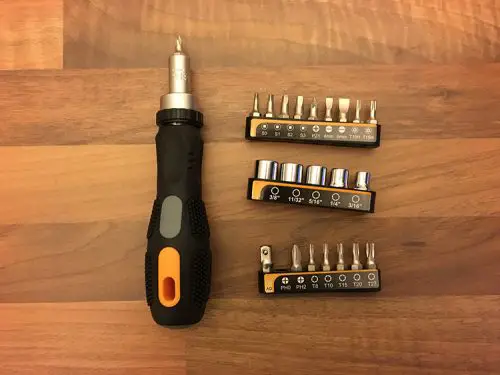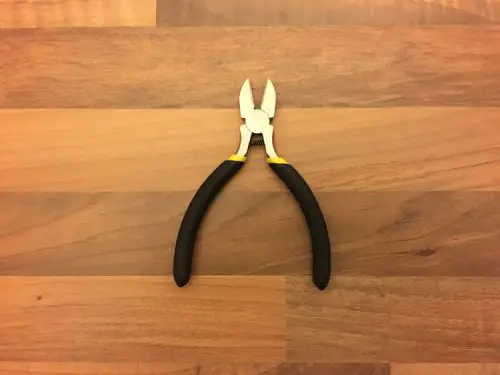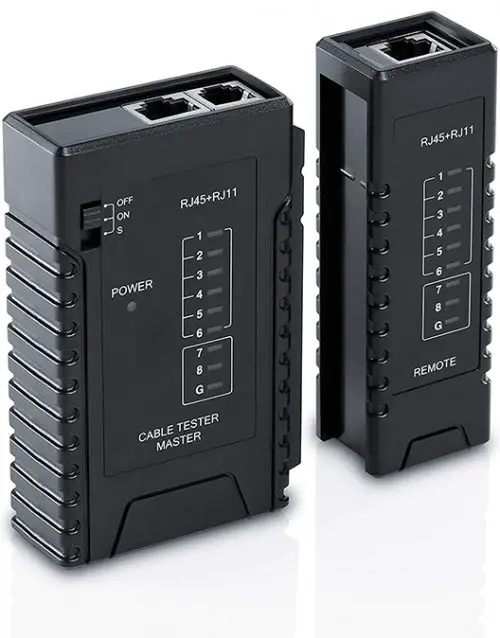Affiliate Disclosure: As an Amazon Associate I earn from qualifying purchases.
Home network installation does require a few certain tools to allow you to complete the job both effectively and efficiently.
Some tools are required, such as a crimp tool for attaching an RJ45 connector to the end of an Ethernet cable, whereas others may not be completely necessary, however, they are incredibly useful and you find yourself struggling to complete the installation without one.
1. Punchdown Tool
A punch down tool, which can also be referred to as a krone tool, is a hand tool that is used to connect the wires within an Ethernet cable to one of the following:
- Patch panel
- Punch down block
- Keystone module
- Surface mount box
The name “punch down” is given as the wires are punched into place under force.
Punchdown tools are relatively basic in that they only consist of three distinct parts: a handle, a spring-based mechanism, and a slotted blade that is removable.
When the tool is used to connect a wire, the blade is used to cut off the excess wire and leave a neat and tidy installation.

2. Wire Stripper
A wire stripper is also a hand tool and is designed to remove the protective covering from an Ethernet cable, exposing the inner wires.
This protective covering is known as the “jacket”.
There are many different wire strippers available given that cables can come in a vast number of shapes and sizes.
That doesn’t mean you need to purchase them all, thankfully, as one set of wire strippers can often be used with various size cables thanks to the different size blades.
Wire strippers are incredibly easy to use.
Simply place the cable between the blade and the holder, rotate the stripper around the cable completely and then just slide the jacket off.

3. Screwdriver Set
If any of the tools on this list should be considered essential, it would definitely be a screwdriver set.
Now you more than likely already have access to a number of different screwdrivers, however, I always like to have a set which is kept together in a convenient carry case.
This way, I know I only have one place to look should I need a screwdriver and don’t need to be searching every drawer in the house for the one I need.
Having a variety of good quality screwdrivers available is a necessity for not only network installations, but for general everyday use.
For a home network, Phillips and flathead screwdrivers will cater for the majority of your needs, but getting a set which includes many different shapes and sizes is recommended given how inexpensive they are to purchase.

4. Wire Cutters
The purpose of a wire cutter is pretty self-explanatory; they are simply used to cut through a cable and its wires.
They are most commonly used to cut copper (Ethernet cable is made of copper), iron, brass, aluminum and steel wire.
Better quality wire cutters will often have an insulated handle to make sure you don’t receive a shock from the wires you are working with.
That being said, it is always recommended to have the power switched off and cables disconnected before working with them, wherever possible.
There are a few different types of wire cutters; you will probably be ok with just the one, however, wire cutters are typically quite inexpensive, so it might be worth getting one of each type if you have the budget.
Diagonal cutters have intersecting jaws that can cut the wire at an angle, leaving a flat tip. You may hear these referred to as flush cutters as a way of differentiating them from symmetrical cutters, which leave a pointed tip.
If you were to only purchase one wire cutter, I would recommend getting a diagonal cutter as it allows you to cut a wire very close to its place, and it leaves a nice flat tip to work with.

5. Crimp Tool
A crimp tool looks similar to a pair of pliers but is actually used to conjoin two pieces of metal by deforming one, or sometimes both, of them in such a way that it causes them to hold each other.
The result of this process is known as a crimp, hence the name of the tool.
The best example of crimping is the process of fixing an RJ45 connector to the end of an Ethernet cable.
Without the use of the crimp tool, the connector will not be secured to the cable and will simply fall off, so it is pretty essential in you are planning on making your own Ethernet cables.
A crimp tool works by first placing each wire of the cable into the connector.
Once all the wires are fed correctly into the connector, the connector is placed into the crimping tool and the handles are squeezed tightly together.
The force generated punctures the connector and holds on to each of the wires. The end result allows for data to be transmitted through the connector.

6. Cable Tester
A cable tester is a device used to test both the strength and connectivity of a particular type of cable.
There are many different types of cable testers available, each of which is able to test a different type of cable. Some of the higher end testers may even be able to test several different types of cable.
This may be useful if you are looking to work with different cables, although this isn’t very likely in a simple home network environment.
The tester is able to tell you if a cable is set up and connected correctly, and give you an idea of the strength of the cable across the entire length.
Within networking, the more commonly found cable tester is used to test Cat5, Cat5e and Cat6 Ethernet cables.
Given that so much data is transmitted over a network cable, it is important to make sure that they are set up correctly, especially if working with many lengths of cable. Also, it is worth using the tester to measure the signal strength is suitable for transmitting data and there is no outside interference having an impact.
Although probably not essential for a basic home network, having a cable tester handy is useful for testing these different factors that can influence the reliability of the cable, and to verify that the connections are correct and will work for you when you connect your device.

Conclusion
If you are looking to set up your own home network, I would recommend all of the tools listed above.
Even if you don’t necessarily need to use them all, they are always useful to have available should you need to perform some troubleshooting or look to upgrade your network in the future.
